Among the variety of paints for wet premises, we choose high-quality and not expensive. Market overview and staining technology.
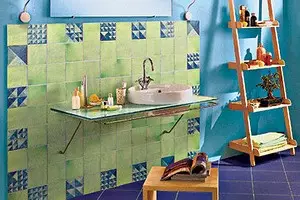
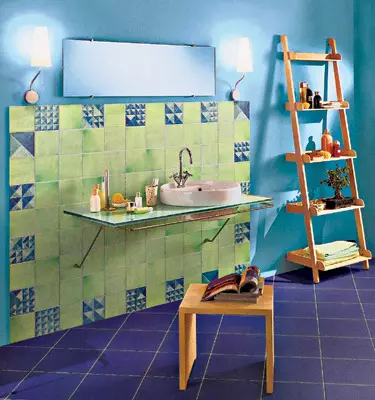
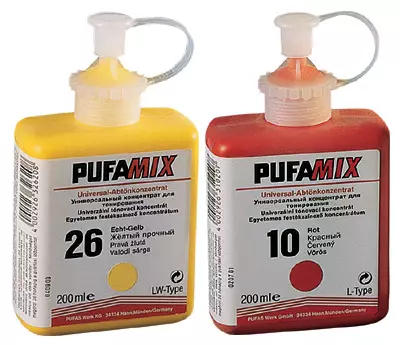
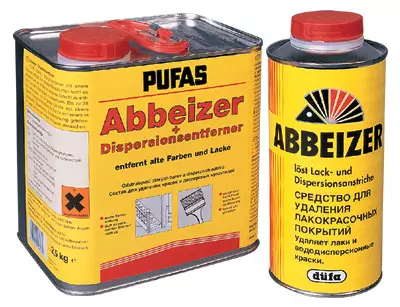
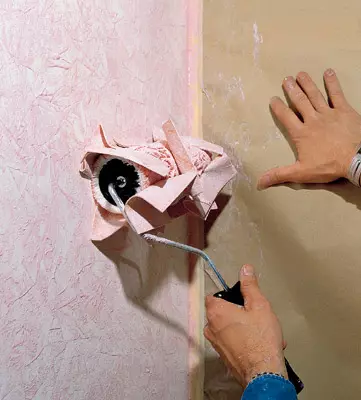
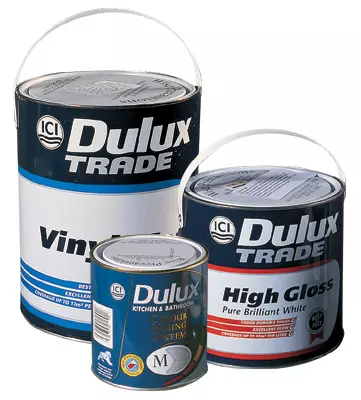
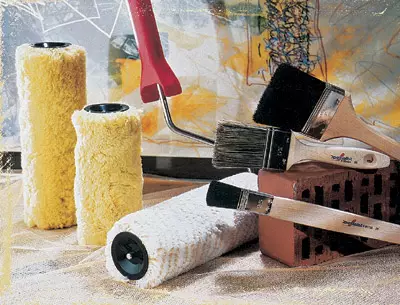
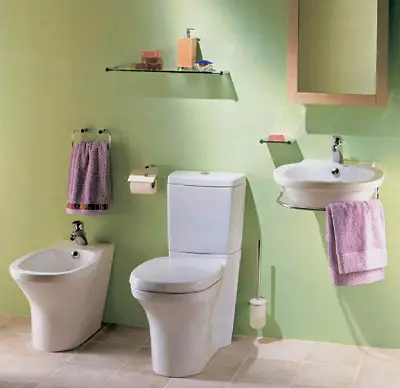
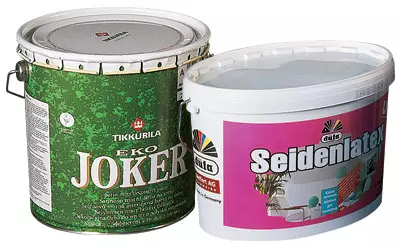
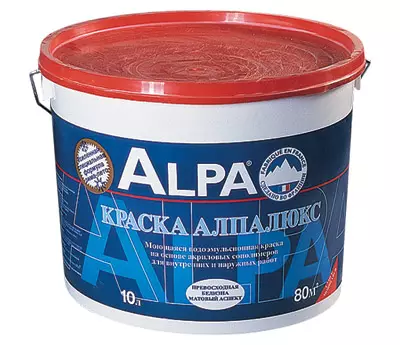
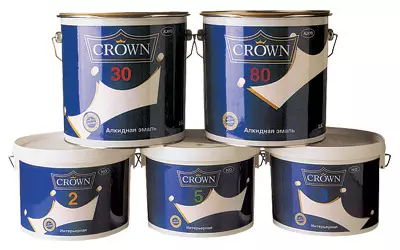
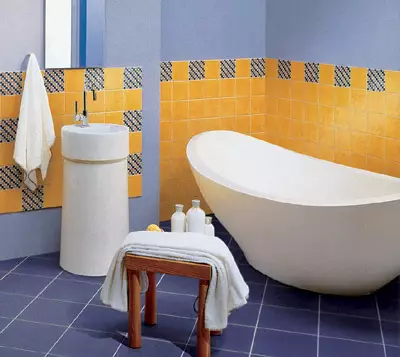
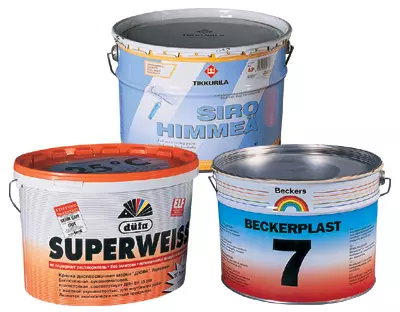
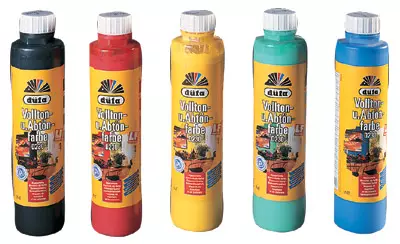
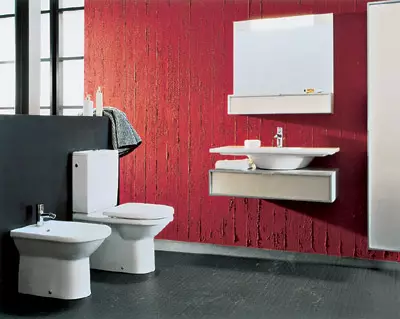
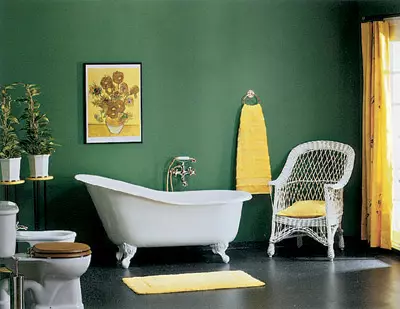
What paint is better to buy for walls of the bathroom, and what kind of ceiling? Take glossy or matte? Domestic or imported? Is it worth trusting the seller? After all, it is profitable for him to sell more expensive material, and for smaller money, you can certainly pick up the paint no worse ... Let's try to find answers to these questions.
By itself, a modern paint-complex composition, which, after uniform application, forms a solid polymer coating (film), which has a certain complex of specified properties formed. And not only decorative. No less important task of paintwork materials - protecting the base from external destructive factors, for example, wood, from drying and biodegradation, metal-on corrosion, concrete surface- from sopping IT.D. Finally, the coating formed by the paint can still perform special functions (let's say, to be moisture-resistant, prevent the formation of mold in rooms with high humidity). The combination of certain properties of paint is determined by its composition.
All modern paint materials used indoors can be divided into two large groups: oil-alkyd paints with enamels and water-dispersion paints. Enamel (more accurately enhable paints) are made on the basis of varnish. They are applied to the latter, the finish layer on a multilayer coating, forming an opaque film with various properties. Depending on the type of binder enamels are alkyd, oil, epoxy IDR. Under the word "paints" traditionally imply the remaining pigmented materials. This term, as a rule, use if they talk about oil or water-dispersion compositions.
The main advantage of oil paints is low price: liter of paints of Russian production, such as Ma-15m, costs $ 0.8-1.2. Diluents serve White spirit, turpentine, solvent naphta or gasoline. Oil paints are inferior to alkyd enamels on the hardness of the film, its appearance and purity of color. Sytom, they drown longer, up to several days. The inclusion of the binder is applied by olifes with the addition of hardeners. The range of applications of such compositions during finishing works indoors is steadily narrows, because when drying, materials are distinguished by harmful substances. But their main disadvantage is that the coverage is yellowing in a few years, losing the initial color. Oil paints are practically not used to finish bathrooms.
Alkid enamels are relatively inexpensive, possess a good water-repellent ability to cover with them is easy to clean all ordinary household means. Due to low water and vapor permeability, enamel based on other binding alkyd resins mainly go to staining wooden window frames, doors and floors.
Pitry with high humidity Painted surfaces must withstand the effects of water and household cleaners, soap solutions. Typically, the component composition of the paint is selected in such a way that the finished coating prevented the appearance of mold and was suitable for washing and wet cleaning. Most often in "wet" zones, acrylic water-dispersion paints are used, produced by numerous Russian and foreign manufacturers.
Compared to oil and alkyd, water-dispersion paints have a number of very significant advantages. Let's start with the fact that all of them are environmentally safe, because they do not distinguish harmful substances (first of all organic solvents) nor with applied or during the operation of coatings. These materials form a polymer film, permeable for vapors, but impermeable to liquids. The vapor permeability of the film allows any surface to "breathe". Extract is always present residual moisture, and if the paintwork does not pass the air, the threat of the swollen of the film layer is large. This problem disappears if the paint has so-called one-sided vapor permeability, which allows internal moisture to pass through the film without accumulating and without disturbing its adhesion (adhesion). Now the time of moisture from the outside does not penetrate the coating. Water dispersion materials are manufactured mainly on the basis of three types of dispersions: with polyvinyl acetate (PVA), acrylic and, finally, with butadiene-styrene binders. The last type of paints belongs to the group of latex coatings and is good, for example, when staining textured and glasses, as well as for repair work on old plaster and cement grounds.
For coloring walls and ceilings requiring frequent washing (in the bathroom or shower), water-dispersion compositions are suitable with acryption binders. As a rule, the time of drying such materials on low-rise at a temperature of 20-25 ° C and humidity of 50% is approximately 30 minutes, and the next layer is applied after 2 hours.
Stacks of view of the decorative function of water-soluble paints out of competition. The choice of color shades can be considered unlimited. In any case, for alkyd and oil materials, the caloring schemes are not so rich. Finally, with paints based on an aqueous solution of polymers, it is easier, more convenient and more pleasant to work: they practically do not smell, are easily applied, quickly dry (each layer - on average for 30-40 minutes at room temperature and normal humidity), and used tools without problems are laundered with water.
Acrylic paints are produced by almost all major foreign manufacturers: Semin, SomeFor (France), Meffert, Jobi, Caparol (Germany), Marshall (Turkey), Tikkurila (Finland), as well as Akzo Nobel (Denmark), Beckers, Krass (Sweden) IDR . For example, the semi-slip water-based paint based on acrylic copolymers of BeckerPlast 20 (7.3 per 1 liters) of Beckers is specifically designed for walls and ceilings, which will be exposed to multiple wet processing, and is particularly resistant to washing (withstands up to 2000 cycles). Similar properties have matte paint Crown "Interior 5" (2.4 per 1 liter), the interior collection of "Maestro" made by Akzo Nobel (2 for 1l) IDR. Especially pleased that in recent times, domestic moisture-resistant materials appeared on the market, they are cheaper than European, but do not inferior to them in quality. These are acrylic water-soluble paints at a price of 0.5-1.8 per 1 liter of firms "VGT", "Svyatozar", "Yaroslavl paints", "Palette of Russia" IT.d. I would also like to note the Profilux PL-10L (0.6 per 1 liter) production "Polyluux", Parade W100 (1.6 per 1 liter) from Lacra Decor or acrylic paints such as Dulux Kitchen and Bathrooms Paint (12.8 per 1 liter) English company Ici Paints Idr.
Wggazines can be found paints that form a coating withsting cleaning not only by ordinary household, but also with special detergents, including disinfectant. Such, for example, produced by Tikkurila semiamte and semi-conventional paints for raw rooms "Luya" (500 variants of tinting), whose semi-tailed samples are more moisture resistant, as well as special materials from BETEK (Turkey), Caparol, Jobi, Beckers, Akzo Nobel Idr.
The main thing, remember that one moisture-resistant paint will not provide proper protection against dampness. It is necessary to use a whole complex of materials, which usually includes vapor insulation primer, moisture-resistant putty and, finally, paint containing additives against mold. If part of the wall in the bathroom you are going to be faced with a tile, and partly paint, the most vulnerable place will be the seams between the tiles and the jack of the tile and the colorful coating. For the first case, moisture-resistant grout will help, in second, any silicone mastic for wet rooms.
Color composition
Despite the variety of manufactured paint materials, they all have a common component scheme. The main component is a binding basis. Actually, the binder is also a substance that, after drying, forms a film coating. According to its origin, film-forming substances are divided into natural and synthetic. Cups include specially treated vegetable oils, natural resins (amber, rosinteal IT.), as well as protein substances, such as casein. A group of synthetic binders is significantly wider, and alkyd and alkyd-urethane resins, perchlorvinyl, acrylate and its copolymers can act as the basis.
The paint would not be paint if there were no pigments in its composition. It is these solid powdered mineral and organic matter give the coating color and opacity. Do not do paintwork and without fillers. As such, fillers do not have protective and decorative properties, but are able to improve the shelterness of the paints and partially replace expensive pigments. Punching of the fillers is most often used solid inorganic substances of white or weak-colored. These may be particles of crushed marble or chalk. For water-dispersion paints, many manufacturers use kaolin-based fillers, omiakarba, silica, talc and mica.
Special additives are also introduced, the task of which is to regulate the available properties of paints and give them special properties. The indispensable components of any paint are various hardeners, plasticizers and solvents. If necessary, antiseptics may be included in the formulation (preservatives protecting the material from the destructive effects of microorganisms, mold and fungi), antifreeze (protect paint from freezing), antiflatives (allow you to make a coating perfectly smooth) and other highly specialized additives. The main component of the dispersion water-soluble paint-aqueous solution of polymeric binders. After applying, the material will not just dry due to evaporation of water, but is polymerized, chemically, as it were, with all the components and forming a protective film. The second important component of water-dispersion paints - Pigments. They are responsible for the quality of color and opacity. By the way, despite several frightening name, titanium dioxide is a completely harmless component, allowed to use for the interior decoration of residential premises in European countries, including in Russia.
Manufacturers, and sellers call dispersion paints in different ways - dispersion, water-emulsion, latex. However, in fact, we are talking about the same thing. It is only a difference that any emulsion is the smallest particles of fluid distributed in another liquid (the easiest example of ordinary milk), and the dispersion, latex is a suspension of solid particles (pigments, fillers and additives) in an aqueous solution of polymer. It is more correct to call similar paints with water-dispersion.
Acrylic binders give the composition good shelterness and vapor permeability. Water-dispersion acrylic enamels are universal, they can be painted almost any surfaces. Acrylic paints are made of acrylic resin copolymers. There are compositions and based on acrylate rubbers or styrene acrylate dispersions. An example is the paint wijzoplex (Wijzonol, Holland), VivaColor Interior (Baltic Color, Estonia), forming after drying with a super-elastic film.
Staining technology
Work on staining should be carried out, strictly observing the technology. Old coatings are pre-removed, after which the base is ground, plastered and put off. Moreover, depending on the quality of the surface, you will need to apply different number of layers of finishing. When irregularities are less than 3 mm, the primer of deep penetration is used (it provides adhesion of materials and waterproof overlapping; well, if there are additives that prevent the appearance of fungus and mold in its composition), moisture-resistant putty (for thin base alignment), moisture-resistant finish primer and moisture-resistant paint. In defects, 3-10mm are consistently applied primer, plaster on a plaster basis, primer, putty, primer, paint (all materials on top of the plaster layer should be moisture-resistant, the plaster itself can be strengthened with a glass tape net). In case of deviations from the plane, more than 10mm, the procedure for applying layers remains the same, but the plaster on a sandy-cement basis is used.Primer is recommended to choose the same manufacturer as paint, since their base should be the same. In order to get a durable, neat surface, it is necessary to strictly observe the deadlines for applying the next layers of the coloring material. So, the time of drying the paints is divided into three steps: up to turning (the paint dries up, and dust does not stick to it); before applying the following layer; Finally, complete drying, when the paint is polymerized and the coating acquires its final properties.
The integrated practice, as a rule, use the most common plasters, achieving waterproof materials due to the moisture resistance of all subsequent layers of finishing (there are special waterproof plaster, such as Vetonit TT from Optiroc, Finland; Deumisal from Index, Italy). The whores on the basis of chalk or lime, as well as the simple water-level paint in this case, are not suitable, from permanent interaction with water vapor such a coating cracks and will stall. Only special compositions, which are also called: paints for wet premises (as already mentioned, it can be materials on an acrylic, latex or silicone basis, separate water-dispersive, as well as oil paints, though the latter are very hotels very quickly).
To avoid mistakes
So, in front of you a wall of mineral material that needs to paint. If the house is new, special problems from painting walls and ceilings, as a rule, does not arise: all work is carried out in a traditional order, including priming operations and surface leveling. It is quite another thing if you are the base, painted, say, during the previous repair. It is important to take into account the compatibility of paints and varnishes. It is advisable to use the paint of the same type. But if you do not know exactly what it was for the makeup, it has been washed away to spend several tests, the easiest of which is to lose the painted surface with an abrasive skurt. Water-dispersion paint will remain on the abrasive, and the oil or alkyd occurs.
In general, it is better to immediately establish the degree of mechanical strength of the base prepared to the color of the base. Spend on the wall with a spatula. If the coating creates or is an old peeling paint, it is necessary to fully clean it, after which it is necessary to treat the surface with special acrylic soils and, if necessary, sharpen. A fairly common mistake of many is not enough qualified builders - use instead of acrylic soil Olifa. It is impossible to do this in any way: the dispersion paint will later simply simply fall on the olifa layer, which is also much less durable than the paint itself. Such miscalculations are expensive: you will have to overpay not only for the material, but also for carrying out additional work to remove poor-quality coverage and applying a new one.
For water-dispersion paints, manufacturers offer the appropriate water-based primer-based primer-based compounds with acrylic binders, for alkyd enamel-based alkyd resins. A serious problem occurs if the walls of the walls were previously painted with oil paint (or any other on organic solvents). For such foundations, water-dispersion compositions lie badly, the marriage is almost inevitable. The most radical method is to remove the former coating. Power colors are removed with a weakly acid solution with a sponge or a soft brush. There are also ready-made specialized agents for removing old paintwork: Dufa Abbeizer from MEFFERT, Rapidon Firm Tikkurila, Paint Remover from Betek. True, their cost is quite high - 7.3 per 1 liter. Various domestic drugs are cheaper (2.5 per 1 liter), but less effective. The disadvantage can be considered a very sharp smell of coherent means. Nevertheless, the complete removal of the previous paintwork layer ensures that a new coating will not start peeling and bubble over time. If it is difficult to do this, we advise you to apply acrylic soil for preliminary finishes or to purchase a special material designed to work on old paints. These properties possess predominantly water dispersions: paint with MattlateEx silky gloss from Caparol, "Eco-Joker" from Tikkurila or half-man on acrylic-based Vaggfarg GT 20 (10 for 1l) from Beckers.
When choosing paint, the absorbency of the surface is important. It is usually related to the hygroscopicity of materials, that is, their ability to absorb water. This property is inherent in fresh gypsum, lime, cement bases, as well as some varieties of bricks (especially refractory and silicate). The strongest surface instantly, like a sponge, pulls water from the paint, preventing normal film formation. The ultimately applied material begins to crumble, as if it never had a binder. Estimate the degree of hygroscopicity of the wall is very simple: it is enough to sprawl on it 50-100 ml of water and look at the surface. If the process of absorption occurs literally in front of the eyes, it's bad. You can deal with this using acrylic soils, if necessary, additionally diluted with water.
Choosing paints ...
First of all, you should understand that you need not one material, the price of which you liked, and a whole system, say soil, putty, finish putty and paint. Buy all this is better in one place and from one manufacturer, otherwise the chance is great to acquire incompatible materials, and therefore losing time and money on alterations.
Be sure to look, whether the number of the hygienic certificate, the number or GOST number, is affixed on the label of domestic paints, according to which the goods are manufactured. If you did not find on packaging such marking (or see text not in Russian), ask the seller to acquaint you with a copy of the certificate. It is possible that there are restrictions on the use not specified on the label.
Consult with the specialists of the contractor's company who has a repair in your home, which are planned non-standard and complex work (removal of old paintwork coatings, the application of texture paints, the use of materials of different color shades, decorative stucco, etc.). It is also necessary to know the type of base for staining (layer of putty or plaster, plasterboard, glassy or wooden panels). Why is it important? Simply not in all cases is suitable for universal paint. Even the most removable universal material in each particular case will lose a good specialized, and for unnecessary properties you pay a significantly higher price.
Save on paintwork materials and not lose as you will succeed only if you know the appointment and possibility of a particular product. Therefore, first of all, examine the instructions for the use of paint you are interested in and pay attention to the following properties.
Water resistance . PVE-based decorations it is low, but at butadiene styrene and acrylic-high. Therefore, it is not necessary to use PVA-paints in wet rooms, such as in the bathrooms.
Light resistance . Different and alkyd enamels this figure is noticeably lower than that of acrylic paints and PVA-based compounds. Assue is a queue, PVA-paint is best used in rooms with rope illumination - in bathrooms, hallways, basement. Well, the most light-resistant are paint materials based on acrylic dispersions.
Paint consumption . Usually, when buying compare the cost of 1l (kg) of the product. But in the end, you are not a liter of paint, but the surface area painted with this liter. It is this indicator (VM2 / L) and lead manufacturers on each package. Despite the fact that some firms give paint consumption approximately or in the form of one digit (ICI Paints, Jobi), or in a specific range (Akzo Nobel, Lacra Decor, Yaroslavl Paints), and those and others take into account the type of surface and Method of application. Companies such as Sentapol (Turkey), Tikkurila, Baltic Color indicate the documentation for their products the so-called practical consumption, painting in detail how much paint will leave when it is applied to different types of basics (say, concrete, previously painted base, plastering IDR. ).
Typically, the paint consumption standards shown on the package are determined in the thinnest layer, under ideal conditions and on a flat smooth surface with an average absorbency. Staying the qualification of the wizard, it will take a slightly larger material for the processing of a rough or textured base. Aesl has to deal with porous surfaces, such as concrete or plaster, paint consumption will also increase. Finally, the method of applying should be taken into account. When using the spray, roller or brush, the product consumption increases in the same sequence. So, calculating the required amount of material, be prepared for the fact that the value you received will turn out to be higher than the package by 5-15%. For the exact calculations, it is better to make a trial painting directly in place.
Cases are high-quality (which is almost always 25-50% more expensive than others) colorful compositions, having better covers, completely overlap any color of the base for 2 layers. Applying medium quality materials, the same task can be solved by applying them to the surface of 3-4 layers (values here, of course, relative). That is why they will cost cheaper when buying, but more expensive when used. For the first option, the other way around. So in the money you will not lose, but it certainly will win as.
The editors thanks the company "Spectrum LC" and the Tritan Trading House for help in the preparation of the material.
